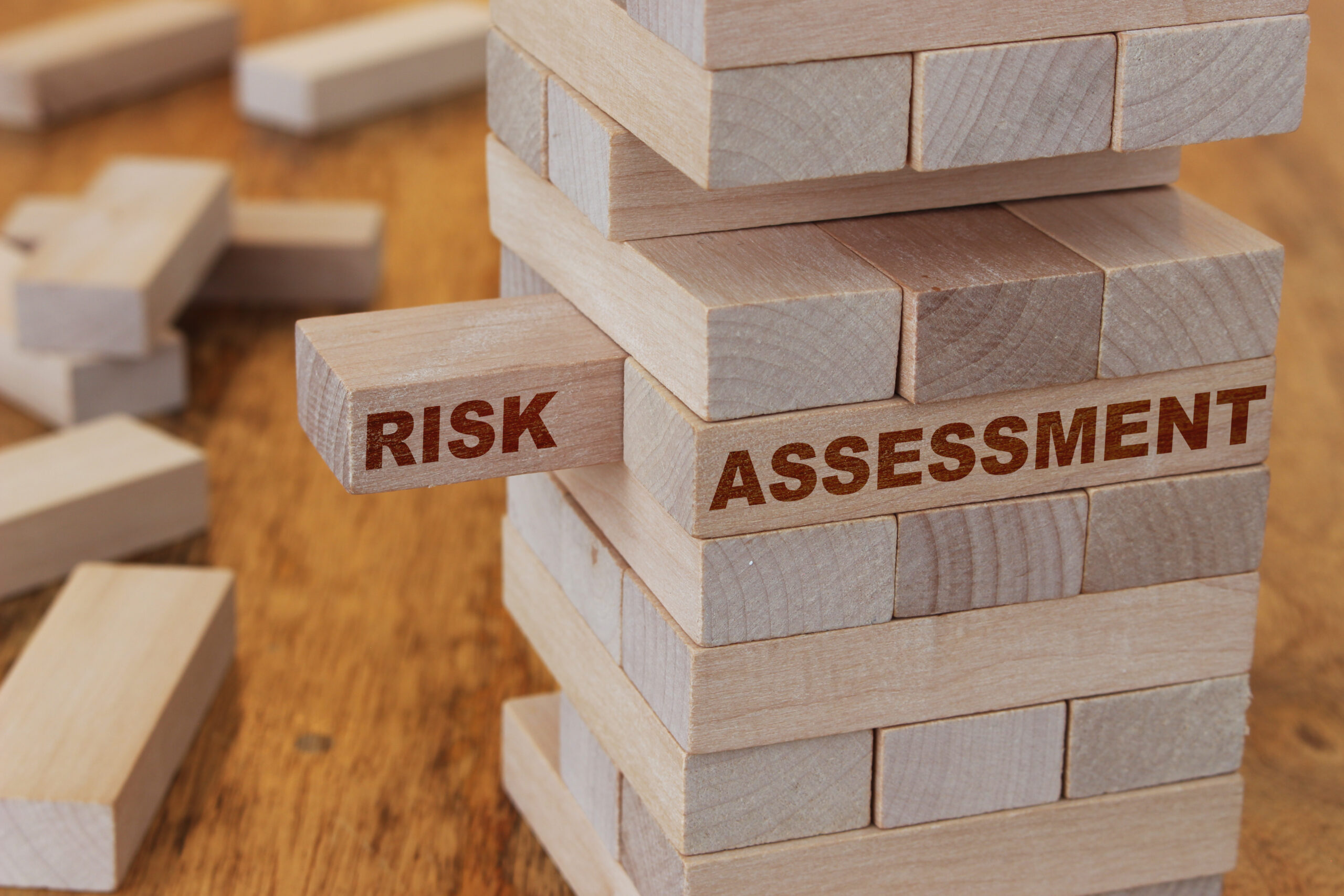Risk assessments are a critical component of any organization’s risk management strategy. They are used to identify potential risks and evaluate the likelihood and potential impact of those risks. Risk assessments are essential because they help organizations make informed decisions about how to allocate resources and prioritize actions to mitigate risks.
One of the primary reasons why risk assessments are important is that they help organizations identify potential hazards and evaluate the risks associated with those hazards. By identifying potential risks, organizations can take proactive steps to mitigate those risks and prevent accidents, injuries, or other negative outcomes. Risk assessments also help organizations prioritize their efforts, focusing on the most significant risks first to ensure that resources are used effectively.
Another reason why risk assessments are important is that they help organizations comply with legal and regulatory requirements. Many industries are subject to specific regulations and standards related to risk management, and failure to comply with these requirements can result in significant fines or other penalties. By conducting regular risk assessments and taking appropriate actions to mitigate risks, organizations can demonstrate their commitment to compliance and avoid potential legal or regulatory issues.
Understanding Risk Assessments

Risk assessments are a crucial process in effective risk management. It is a legal requirement for any employer and must be documented wherever five or more people are employed. The primary purpose of a risk assessment is to identify potential hazards and assess the level of risk associated with them. This information can then be used to determine the appropriate measures to reduce or eliminate the risk.
The risk assessment process involves several steps. The first step is to identify the hazards that exist in the workplace or in a particular task or activity. Hazards can be physical, chemical, biological or ergonomic. Once the hazards have been identified, the next step is to assess the level of risk associated with each hazard. This involves considering the likelihood of an incident occurring and the potential consequences if it does.
The risk assessment process is not a one-time event. It is an ongoing process that should be reviewed and updated regularly to ensure that the measures in place are still effective and appropriate. In addition, risk assessments should be carried out whenever there are significant changes to the workplace or the work activities being undertaken.
Carrying out a risk assessment is not a complex process. There are many resources available to help employers carry out risk assessments, including templates, checklists, and guidance documents. It is important to involve employees in the risk assessment process, as they are often the best source of information about the hazards and risks associated with their work.
In conclusion, risk assessments are a critical component of effective risk management. They help to identify potential hazards and assess the level of risk associated with them. This information can then be used to determine the appropriate measures to reduce or eliminate the risk. Employers should carry out risk assessments regularly and involve employees in the process.
Importance in Health and Safety
Risk assessments are crucial for maintaining health and safety in the workplace. By identifying potential hazards and evaluating the risks associated with them, employers can implement control measures to prevent injury and harm to their employees and others. In this section, we will discuss some of the specific areas where risk assessments are particularly important.
Prevention of Injury and Harm
One of the primary purposes of risk assessments is to prevent injury and harm. By identifying hazards and evaluating their severity, employers can implement appropriate control measures to reduce the risk of accidents and injuries. For example, a risk assessment might identify a hazard such as a slippery floor and recommend control measures such as regular cleaning, the use of non-slip mats, and the provision of appropriate footwear.
Hazardous Substances
Risk assessments are particularly important when dealing with hazardous substances. Employers have a legal obligation to ensure that their employees are protected from exposure to hazardous substances, and risk assessments are a key tool in achieving this. By identifying the hazards associated with a particular substance and evaluating the risks associated with exposure, employers can implement appropriate control measures such as the use of personal protective equipment, safe storage and handling procedures, and appropriate ventilation.
Fire Safety
Risk assessments are also important for fire safety. By identifying potential fire hazards and evaluating the risks associated with them, employers can implement appropriate control measures such as the provision of fire extinguishers, smoke alarms, and emergency lighting. They can also ensure that their employees receive appropriate training in fire safety procedures.
Health and Safety Compliance
Finally, risk assessments are an important tool for ensuring compliance with health and safety regulations. Employers have a legal obligation to ensure the health and safety of their employees, and risk assessments are a key part of meeting this obligation. By identifying hazards and evaluating the risks associated with them, employers can implement appropriate control measures to ensure that they are meeting their legal obligations.
In conclusion, risk assessments are essential for maintaining health and safety in the workplace. By identifying hazards and evaluating the risks associated with them, employers can implement appropriate control measures to prevent injury and harm. Risk assessments are particularly important when dealing with hazardous substances, fire safety, and ensuring compliance with health and safety regulations.
Role in Technology and Security

Risk assessments play a crucial role in technology and security. By identifying potential risks and vulnerabilities, organizations can take proactive measures to mitigate them and prevent security incidents. In this section, we will discuss the importance of risk assessments in data privacy, safety, and security measures.
Data Privacy
Data privacy is a critical concern for organizations that handle sensitive information. A risk assessment can help identify potential threats to data privacy and ensure that appropriate security measures are in place to protect against data breaches. This includes measures such as encryption, access controls, and data backups.
Safety and Security Measures
Risk assessments are also essential in ensuring the safety and security of employees and physical assets. By identifying potential risks and vulnerabilities, organizations can take steps to prevent accidents and security breaches. This includes measures such as fire safety protocols, emergency response plans, and physical security measures such as access controls and surveillance systems.
In addition, risk assessments can help identify potential risks and vulnerabilities in technology systems, such as network infrastructure and software applications. This can help organizations ensure that appropriate security measures are in place to protect against cyber threats and prevent data breaches.
Overall, risk assessments play a critical role in ensuring the safety and security of organizations. By identifying potential risks and vulnerabilities, organizations can take proactive measures to mitigate them and prevent security incidents.
Legal Implications
Risk assessments have significant legal implications for businesses and organizations. Conducting a thorough risk assessment is essential for compliance with legal requirements and can help mitigate legal liability.
Legal Requirements
Many industries are subject to legal requirements that mandate risk assessments. For example, the healthcare industry is required to conduct regular risk assessments to comply with HIPAA regulations. Similarly, financial institutions are required to conduct risk assessments to comply with anti-money laundering laws and regulations.
In addition to industry-specific legal requirements, there are also general legal requirements for businesses to conduct risk assessments. For example, the Occupational Safety and Health Administration (OSHA) requires employers to identify and assess workplace hazards to ensure a safe work environment.
Failing to comply with legal requirements can result in significant legal consequences, including fines and legal action. Conducting a thorough risk assessment can help ensure compliance with legal requirements and mitigate legal risk.
Legal Liability
Businesses and organizations can also face legal liability if they fail to conduct a thorough risk assessment. If an incident occurs that could have been prevented through a risk assessment, the business or organization may be held liable for damages.
For example, if a company fails to conduct a risk assessment of its supply chain and a supplier engages in illegal or unethical practices, the company may be held liable for any resulting legal or financial consequences.
Conversely, conducting a thorough risk assessment can help businesses and organizations mitigate legal liability. By identifying and addressing potential risks, businesses can take proactive steps to prevent incidents and reduce the likelihood of legal consequences.
In summary, conducting a thorough risk assessment is not only essential for compliance with legal requirements but also for mitigating legal liability. Businesses and organizations should prioritize risk assessments to ensure legal compliance and reduce legal risk.
Risk Management in Business

Risk management is a crucial aspect of any business. It is the process of identifying, assessing, and controlling risks that may affect the achievement of business objectives. In this section, we will discuss the different aspects of risk management in business, including identifying associated risks, quantitative risk assessment, risk analysis, and modeling.
Identifying Associated Risks
The first step in risk management is identifying the risks that are associated with the business. This can be done by conducting a risk assessment, which involves identifying potential risks and their impact on the business. Risks can be categorized into different types, such as financial, operational, strategic, and reputational risks.
Quantitative Risk Assessment
Once the risks have been identified, the next step is to assess them quantitatively. This involves assigning a probability and impact rating to each risk. Probability refers to the likelihood of the risk occurring, while impact refers to the severity of the consequences if the risk does occur. By assigning a rating to each risk, businesses can prioritize their risk management efforts and focus on the risks that pose the greatest threat to achieving their objectives.
Risk Analysis
Risk analysis is the process of analyzing the identified risks and their potential impact on the business. This involves determining the likelihood of each risk occurring and the potential consequences if it does occur. By conducting a risk analysis, businesses can develop a better understanding of the risks they face and develop strategies to mitigate those risks.
Modeling
Risk modeling involves using mathematical models to simulate the impact of different risks on the business. This can be done by using statistical models to predict the likelihood of a risk occurring and the potential impact it will have on the business. By using risk modeling, businesses can develop a better understanding of the potential consequences of different risks and develop strategies to mitigate those risks.
In conclusion, risk management is an important process that businesses must undertake to achieve their objectives. By identifying associated risks, conducting quantitative risk assessments, analyzing risks, and modeling potential consequences, businesses can develop strategies to mitigate risks and achieve their objectives with confidence.
Financial Aspects

When it comes to risk assessments, one of the most important aspects to consider is the financial impact that potential risks could have on your organization. By identifying and mitigating risks, you can prevent financial loss and avoid costly fines.
Preventing Financial Loss
Conducting a thorough risk assessment can help you identify potential risks to your organization’s financial stability. For example, you might identify risks related to fraud, theft, or data breaches. By taking steps to mitigate these risks, such as implementing internal controls or investing in cybersecurity measures, you can reduce the likelihood of financial loss.
In addition to preventing financial loss, risk assessments can also help you identify opportunities for financial gain. For example, you might identify areas where you can streamline processes or reduce waste, resulting in cost savings for your organization.
Risk of Fines
Fines and penalties can be a major financial risk for organizations, particularly in industries that are heavily regulated. By conducting a risk assessment, you can identify areas where your organization may be at risk of violating regulations or failing to comply with industry standards.
For example, you might identify risks related to data privacy or environmental regulations. By taking steps to mitigate these risks, such as implementing compliance programs or investing in training for employees, you can reduce the likelihood of fines and penalties.
Overall, conducting a risk assessment can help you identify and mitigate potential financial risks to your organization. By taking a proactive approach to risk management, you can reduce the likelihood of financial loss and avoid costly fines.
Role in Communication and Training
Effective communication and training are key components of a successful risk management program. Organizations with a risk-aware culture prioritize communication, learning, involvement, accountability, and shared commitment to risk management.
Importance of Communication
Clear and concise communication is essential for effective risk management. It enables stakeholders to understand the risks involved and make informed decisions. Communication should be tailored to the audience, using language and examples that are relevant and easily understandable. It should also be timely, ensuring that stakeholders have the information they need to act quickly when necessary.
Regular communication with stakeholders can also help to build trust and confidence in the risk management program. This can be achieved through ongoing updates, feedback mechanisms, and transparent reporting.
Training for Risk Management
Training is another critical component of a successful risk management program. It ensures that stakeholders have the knowledge and skills necessary to identify, assess, and manage risks effectively. Training should be tailored to the specific needs of each stakeholder group, ensuring that they have the information and tools they need to perform their roles effectively.
Effective training programs should be ongoing, with regular updates and refresher courses to ensure that stakeholders are up-to-date with the latest developments in risk management. They should also be interactive, engaging, and relevant, using real-life examples and case studies to help stakeholders understand the practical application of risk management principles.
In conclusion, communication and training are essential components of a successful risk management program. They enable stakeholders to understand the risks involved, make informed decisions, and manage risks effectively. By prioritizing communication and training, organizations can build a risk-aware culture that promotes accountability, involvement, and shared commitment to risk management.
Facilities Management and Risk Assessments

Facilities management is responsible for ensuring that buildings and equipment are properly maintained, and that they are safe for use. One of the key tasks of facilities management is to conduct risk assessments. A risk assessment is a systematic process of identifying, analyzing, and evaluating potential hazards and risks associated with a building or equipment.
Risk assessments are important for facilities management because they help to identify potential hazards and risks that may not be immediately apparent. By identifying these risks, facilities management can take steps to mitigate them and reduce the likelihood of accidents or injuries.
For example, a risk assessment of a building might identify potential hazards such as faulty wiring, uneven flooring, or inadequate lighting. By addressing these issues, facilities management can help to reduce the risk of accidents and injuries. Similarly, a risk assessment of equipment might identify potential hazards such as malfunctioning parts or inadequate safety features. By addressing these issues, facilities management can help to reduce the risk of equipment failure and accidents.
In addition to identifying potential hazards and risks, risk assessments also help to ensure compliance with relevant regulations and standards. For example, a risk assessment of a building might identify areas where cleaning is necessary to prevent the spread of infections or diseases. By addressing these issues, facilities management can help to ensure compliance with relevant health and safety regulations.
Overall, risk assessments are an important tool for facilities management. By identifying potential hazards and risks, facilities management can take steps to reduce the likelihood of accidents and injuries, ensure compliance with relevant regulations and standards, and ensure that buildings and equipment are safe for use.
Risk Assessment Tools and Software
Risk assessment tools and software are essential for businesses to identify, analyze, and manage potential hazards and risks. These tools can help organizations to streamline their risk assessment process, making it quicker and more efficient.
One of the most important tools in risk assessment is a risk matrix. A risk matrix is a visual representation of the likelihood and impact of a risk. It helps to prioritize risks and assess their severity. By using a risk matrix, businesses can make informed decisions about which risks to address first and allocate resources accordingly.
Risk assessment software is another valuable tool that can help businesses to automate their risk assessment process. This software can help to standardize the risk assessment process, making it more consistent and reliable. It can also help to identify and track risks over time, making it easier to manage them.
When choosing risk assessment software, it is important to consider factors such as ease of use, scalability, and integration with other systems. Some popular risk assessment software options include:
- Resolver: A cloud-based risk management software that offers a range of risk assessment tools, including risk matrices, risk registers, and risk scoring.
- RiskCloud: A risk management software that offers a range of tools for risk assessment, including risk matrices, risk registers, and risk heat maps.
- RiskWatch: A risk management software that offers a range of tools for risk assessment, including risk matrices, risk registers, and risk level calculators.
In conclusion, risk assessment tools and software are essential for businesses to identify, analyze, and manage potential hazards and risks. By using these tools, businesses can make informed decisions about which risks to address first and allocate resources accordingly. Whether using a risk matrix or risk assessment software, it is important to choose a tool that meets the specific needs of your organization.
Responsibility and Accountability

When it comes to risk assessments, responsibility and accountability are crucial. As an employer, you have a responsibility to ensure that your workplace is safe for your employees and visitors. This includes identifying potential hazards and taking steps to eliminate or reduce the risks associated with them.
However, responsibility alone is not enough. Being accountable means that you are responsible for understanding the risks, creating controls or processes to manage the risks, reporting on the performance of those controls and processes, and ultimately guiding the business’s response to that particular risk. This means that you need to be proactive in identifying and managing risks, and you need to be able to demonstrate that you have taken appropriate steps to address any issues that arise.
One way to ensure that you are meeting your responsibilities and being accountable is to conduct regular risk assessments. This involves identifying hazards, assessing the risks associated with them, and implementing controls to manage those risks. By doing so, you can ensure that your workplace is safe for your employees and visitors, and you can demonstrate that you are taking your responsibilities seriously.
It’s important to note that responsibility and accountability are not just important for employers. Employees also have a responsibility to take care of themselves and their colleagues. This includes following safety procedures, reporting hazards or incidents, and participating in training and education programs. By working together, employers and employees can create a safe and healthy workplace for everyone.
In summary, responsibility and accountability are essential components of any effective risk assessment program. Employers have a responsibility to ensure that their workplace is safe, and they need to be accountable for managing risks and responding to any issues that arise. By conducting regular risk assessments and involving employees in the process, employers can create a culture of safety and ensure that everyone in the workplace is protected.
Conclusion
In conclusion, risk assessments are an essential tool for businesses and organizations to identify potential risks and threats to their operations, employees, and stakeholders. By conducting a thorough risk assessment, organizations can develop strategies and plans to mitigate and manage risks effectively.
Qualitative and quantitative risk analysis methods are available, each with its advantages and disadvantages. Qualitative analysis is quick and subjective, while quantitative analysis is objective and more detailed, but it takes more time and is more complex. Organizations should choose the appropriate method based on their specific needs and resources.
Furthermore, risk assessments should be directly connected to an overall decision-making process. Failing to frame a risk assessment as decision support can decouple the analysis effort from business outcomes. Therefore, organizations should use risk assessments as a tool to reduce uncertainty when making decisions.
In conclusion, risk assessments are a critical component of an organization’s risk management framework. By identifying and managing risks effectively, organizations can protect their assets, reputation, and stakeholders.
